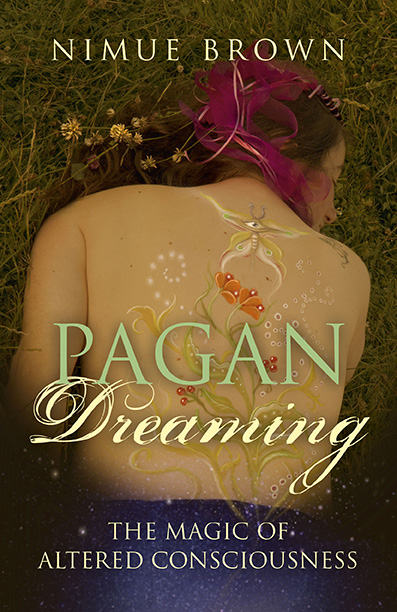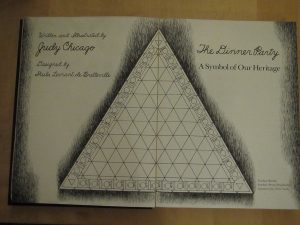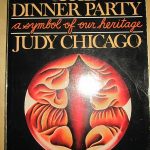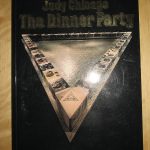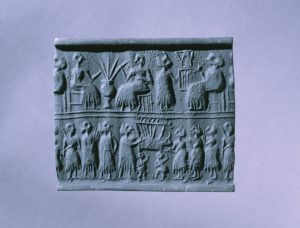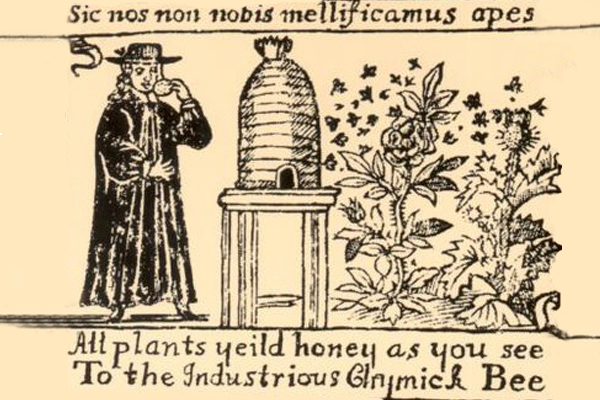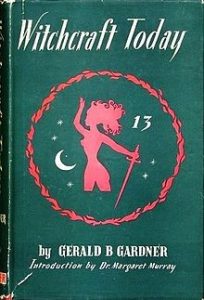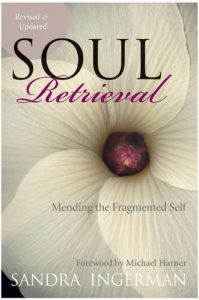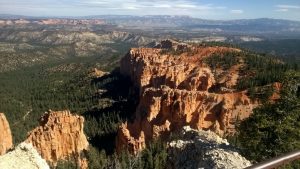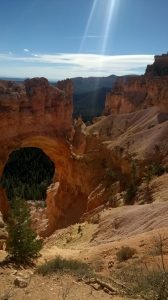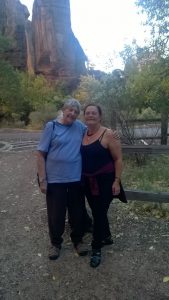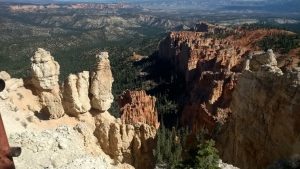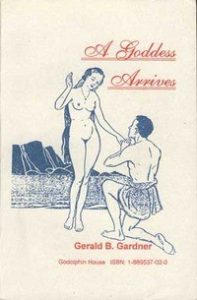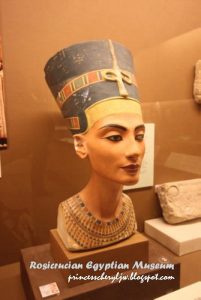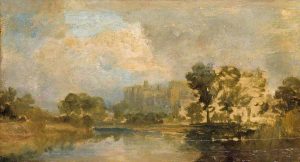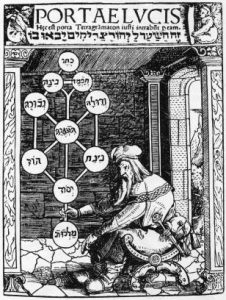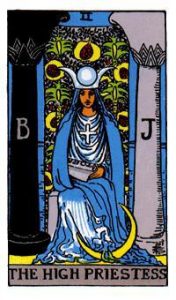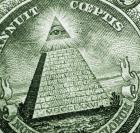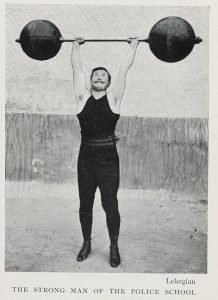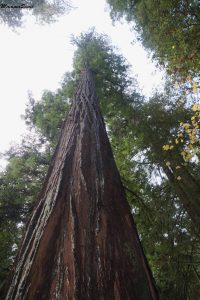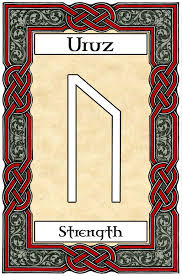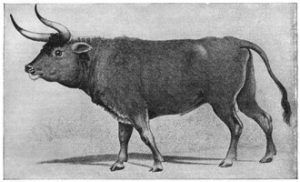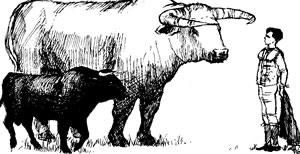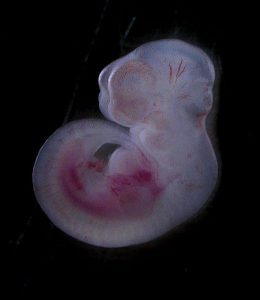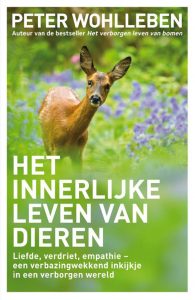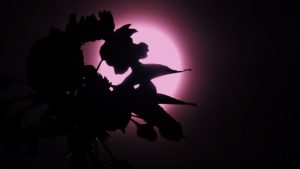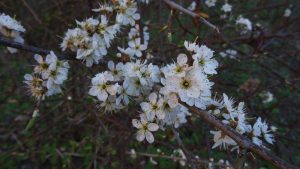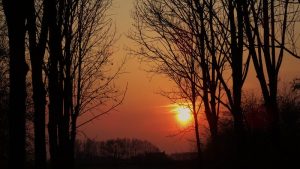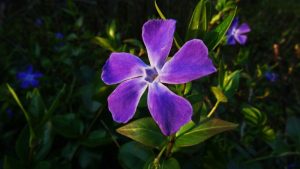When I was initiated in 1979 it wasn’t strange to me that I hardly knew anything about the group I was being brought into. The way Merlin and I found the couple who would later become our HP/HPS was also not strange. It was more … weird. Wyrd as ‘unfolding, becoming’- as if it were meant to happen. The chance finding of an address, the chance meeting of someone on a train. No doubt all of you know the kind of experience I mean. Nevertheless, meeting Gardnerians, who were willing to take ‘people in’, was still quite difficult in the 1970’s. Not that they had anything to hide. On the contrary, it was society in general which was not used to coping with people who had a different way of experiencing and communing with Nature, of being witches, of having contact with the Gods, plural… J
Post-war England saw many social changes including the repeal of outdated laws such as the Witchcraft Act 1735 with the Fraudulent Mediums Act 1951 (which incidentally was repealed in 2008 by new Consumer Protection Regulations, following an EU directive.) This did not immediately mean however that Witches could suddenly come out of the ‘broom closet’. There was, and still is, a need for discretion. Once we made contact we found that people were actually very open about their practice.
Even today within Initiatory Wicca, often referred to as BTW/ British Traditional Witchcraft in the US, there are still things which are regarded as oath-bound. Certainly, the civil names and name and location of the coven are strictly private, but also certain practices and of course magical work done. Wicca itself cannot be studied despite the existence of so-called “Schools of Wicca”. Certain techniques can be learnt but ‘what Wicca is’, can only be experienced as a personal mystery. At least that is how I perceive it!
So, initiation in 1979 was connecting with a particular tradition, a particular current. In our case the Gardnerian tradition. We soon learnt that much of our training was oral, with a strong sense of developing our intuition. Listening and recognising patterns – ‘joining the dots’- understanding what muscle memory really is. Following the lunar cycle and the seasonal cycle. Blending old country lore with city, urban life. Looking at old grimoires and learning about occult and natural laws – pure Al-chemy, pure magic!
I was also fascinated by Gerald Gardner’s work and influence. How did the early coven(s) work? Who were the early Gardnerian Wiccan priests and priestesses? At one point, I even saw a diagram which was supposed to be our ‘family tree’. Not quite a normal genealogy but nevertheless our lineage.
Sure enough, I saw some names which were familiar – others completely new. In the intervening 35+ years I have become more and more familiar with most the people on that tree. A number had died, some had left the Craft – others had gone on to form their own branches or lines.
One of the very early priestesses included on that diagram – Dayonis – had, apparently, left the Craft when she got married and emigrated. Because of the nature of her husband’s work it was not opportune to speak of Wicca, or of her involvement in Witchcraft. So, for many years her name was just a record on our lineage. I could totally appreciate the need for discretion, because at the time I too was in employment where, had it been known that I was a witch, it could have been difficult. I was a teacher then and I later worked in the financial sector.
The name Dayonis, which had been given by Gardner, was in fact the name he used in his first novel, set in Cyprus: “A Goddess Arrives”. (1939 – see notes)
However, in about 1996 Dayonis, who in between times lived in America, reached out and using a very early internet made a connection with Gardnerians in California, USA. At the time, there weren’t that many of us online. I started using email in 1996, but we had already had contact with Gardnerians and Alexandrians, and other pagans, in the US, UK, Australia and Canada since the early 1980’s.
Nevertheless, I was astounded to suddenly see Dayonis introduce herself on an American Gardnerian email list in July 1998.
“My dears,
I have only a couple of comments:
- Please – I am not a “Lady”, just Dayonis. I don’t understand the honorific in this context. I never was a “lady” just a woman in my Brit understanding “Lady”, i.e. with a capital “L” is a title, sometimes earned through political activity, or inherited. Not me my darlings, I’m just a woman. But, nevertheless, I do appreciate the thought!
- Taking the above into consideration, I think of myself as a witch (lower case “w”) practising witchcraft (lower case “w”) under the Wicca symbolism. However, these days I have made myself known to the mundane world as a “born again pagan” – it makes life simpler when one is still technically in the broom closet. I am still inclined to take capitalization as “titling” but that’s as maybe. As for the rest, I bow to Anna’s deep understanding of American Gardnerianity.
May I now introduce myself, too:
Initiated by Gerald Gardner in the middle 50’s, Jack Bracelin was my HP we were initiated at the same time, we ran the Bricket Wood coven together until I left in 1959 to get married still married to the same guy, Goddess Bless him. My Book of Shadows, long gone to humidity and insects when we lived in the Caribbean, was about 20 pages long, pretty sketchy but it worked d-m well, at least we did as a coven. Lois was my Maiden and a considerable psychic. As you all probably know I came out at least on these boards a couple of years ago and did visit CA courtesy of Anna. I guess, when one considers all of the above, perhaps you can call me great-great (to the power of 2 only 2?) grandmother, and that is the title I would love the best, now being a real grandmother of a beautiful granddaughter!
Have just read Lois Bourne’s latest book “Dancing With Witches”, she is right on with her comments about Gerald in the first part of the book. I knew about Idries Shah, met him once when Jack took me to see him; he was one good-looker and a fascinating person as well! As to her folklore comments – I never really read them very carefully – so I won’t comment.
love and blessed be . . . Dayonis”
(copied with permission)
The most interesting thing about Dayonis’ introduction, for me, was that her approach was so familiar and comparable with my own experiences of working in a coven. That we “didn’t stand on ceremony” and “just got on with it” J
There followed several other emails, also from long-standing American and European Gardnerians, covering a number of subjects. Many were concerned with what was ‘right’ as far as Gardnerian practice. In fact, it became such a busy list that I left because of the sheer volume.
After the initial introductions and standard discussions about the “Book of Shadows” it became less interesting, simply because so much of it didn’t apply to what was happening in the Netherlands.
Also, there were lists and fora of our own emerging. Working full-time and coping with Craft activities, I just didn’t have the time to participate in those “Transatlantic” discussions.
So – fast forward – to 2014. I was busy making plans to represent URI (United Religions Initiative) and PFI at the next “Parliament of World Religions” in Salt Lake City, 2015. URI was going to host a Hospitality Suite and I offered to help. There were the usual Facebook groups with people from the various organisations interacting. To my amazement and delight, I noticed that Dayonis was also going to attend. I decided to send her a personal message to let her know I was also attending… but she didn’t respond… However, little did I know that Anna & Don were also attending (Don in his capacity as URI representative) and had already asked Dayonis if she would like to meet me, and Vivianne Crowley, who was also attending the Parliament.
Imagine my sheer delight when I was formally introduced to Dayonis & her husband! She immediately apologised for the brevity of the meeting because they were working as volunteers at the Parliament. They did have time for a little break though. From the word go, we chatted like magpies, wanting to know all the latest news. It really was like meeting family 🙂

(Dayonis & Morgana, at the Parliament of World Religions, Salt Lake City 2015)
We arranged to meet on the Sunday to have lunch and a proper chat. Vivianne and a couple of other Craft friends joined us as well. Of course, we talked about what it was like being in a coven – way-back-when. How simple life was, compared to now.
We talked about lineage and the almost obsession Americans have with it. Of course, we understand why this has occurred and why it is necessary, but as Dayonis later remarked, “We didn’t always know what Gerald was up to.” And indeed, we know that Gerald did have many connections, and met many people.
I had also experienced this as well, thinking back to my own initiation and the coven I trained in. It reminded me of how Vivianne and I first met. Even though we are both downline from Eleanor Bone, and ultimately from Dayonis, we knew very little about each other’s HP and HPS. We knew that they all seemed to have slightly different versions of the “Book of Shadows”/ BoS. Was that a result of sloppy copying? Or were things changed? (We know that things were changed sometimes by GBG, sometimes by the HP/S in question). Dayonis told me later that she often used to borrow Jack’s book…
The conversation was filled with wonderful anecdotes. At one point, we were talking about candles at the 4 Quarters – we asked Dayonis if there they used a particular order or set of colours? “Oh no”, she replied, “we just used white candles..” I added that in our English coven, we used “blue candles” and Anna remembered Doreen’s comment, “we used red candles at the quarters – because there had been a cheap offer at the supermarket”. Burst of laughter!
As ever British practicality and pragmatism at work. I think this is one of the aspects about Gardnerian Wicca which many people find hard to fathom. We always ‘make do’ and often make up things as we go along. We love teasing people but we also have a kind of snobbery which is so often evident in our use of language. Anyone who has seen the lists online of “What Brits say … and what they mean” will know exactly what I am talking about.
So no, we don’t have a standard ‘special red candle’ – we may, however, have a red candle which is special…
But I digress… another typical British habit… J
Dayonis and I got on so well that she invited me to go and visit them properly – which I did, in October 2016. And what a marvellous week we had! Catching up on 40 years of news was quite a feat, but we managed to share a great deal. I must say at this point that I have never met such an exceptional couple!
Married for nearly 60 years and still devoted to each other. They are both still interested in world affairs, reading the papers every day. I was there during the run-up to the Presidential Election in November and we talked about the various candidates, the scandals and mud-slinging, but also the effect of Brexit and growing right-wing populism in Europe.
Although Dayonis is now American she is still very British in her outlook. We are very similar in this respect – both of us having left the UK in our 20’s – and both having taken on a new nationality in our adopted countries. We talked a lot about our English upbringing even though we were both born in Wales. And our continued love for BBC dramas, for example. J
Dayonis was born in Cardiff, on 20th March 1931. According to Fred Lamond, who Dayonis initiated at Imbolc 1957, Gerald Gardner once told reporters that Dayonis, “came from a hereditary witch family. She certainly looked the part with an elfin face that could have come straight from an Arthur Rackham drawing.”
It was Fred, incidentally, who introduced Dayonis to her future husband. They all met at MENSA (established in England in 1946) when Dayonis gave a talk there, at the society. He and Fred were two of the original members of the Mensa Society. The meeting was in 1959. They married in September 1959, a few weeks before they emigrated to Canada.
However, when Dayonis joined the Craft she was Jack Bracelin’s girlfriend and he later became her HP. They were both initiated in 1955. Jack was initiated by Barbara Wickers. And Dayonis by Gerald Gardner. She was 24 years old. They became part of what would later be called the “Bricket Wood Coven”.
She recalls:
“We were just a group of people finding something that agreed with them, and we followed where “it” was going. It was like so many coincidences that happened all at once. We all seemed to be looking for something, and the Craft became exactly what we were looking for. It was a feeling of camaraderie and being very, very fond of one another and generally having a good time together. The Craft back then was very intimate, since there were very few of us doing it.
Bricket Wood really started off with Jack. He was the one who found Gerald’s book, “Witchcraft Today” (published in 1954).

(First edition cover)
Jack went to talk with Gerald and that was the beginning of the Bricket Wood Coven. He and I were together at the time, and we both read Gerald’s book. We felt that finding the Craft was “coming home.” When Jack introduced me to Gerald, it all began to fit together. We went up to Bricket Wood, saw the Witches’ Cottage, and Gerald told us how to get organised to run Five Acres Club.
It was Jack who really did all the groundwork. He was the worker, and he worked tremendously hard. At the Witches’ Cottage, he put the floor in; he painted the outline of the circle that we used on the floor and marked the Quarters. He really was the leader.”
Of Jack, she said, “He was nice, a little different than most people. He drank a lot of tea, and he was really quite pleasant. Jack was kind and generous, truly a nice person. He was looking, really looking for something spiritual. He was very supportive. If you wanted to get something done or know something, you asked Jack.”
 (Jack Bracelin)
(Jack Bracelin)
When talking about Jack, Dayonis also remembered how he helped to fix up the famous “Witch’s Cottage” – “It was very simple. It was a single room. Jack put in a new floor, then painted it black, and then painted a white 9-foot circle with marks where the Quarters were. The Circle’s outline was about two inches wide, and it gave me a boundary when I walked around creating the Circle. There was a chest that we used for the altar, and we kept the things used for the altar inside the chest. That’s it. We kept it simple.”
Mentioning the 4 Quarters, and keeping things simple, reminded me of the comment she had made a year earlier about the quarter candles. I wondered what other tools were used? “There was the athame, a sword, a wand, a tool to asperge salt water, a dish for cakes and wine, candles, a white handled knife and a wonderful statue of a Goddess figure that Freddie’s first wife made.”
We started talking more about practice, about magic and ritual. Dayonis said, “Craft ritual is something that is done with the intent of creation, i.e. creating a circle, cleansing it and its inhabitants and then “doing work” as we used to call it. IMHO it needs repetition of the same words, same actions, etc. because the magic mind finds it easier to do the work of creation and then get on with the work.” She added: “Yes, I was an effective HPS and we did some good magic. N. liked my rain magic very much at his farm.”
Raising power and using what we call sympathetic magic is something Dayonis still feels strongly about. Their concern about ecology is still evident in the fact that they only eat organic foods and use eco-friendly detergents etc. Even though she left Wicca in 1959 I don’t think she ever stopped being a witch. In the intervening years, she and her husband travelled not only to Canada but also the Caribbean. She told me that they had moved 17 times before finally settling in Utah. Surrounded by mountains they love where they are.
I wondered how they had experienced life in the very heart and centre of Mormonism. I asked; would you describe Salt Lake City, for example, as a tolerant city? Dayonis answered that she had never encountered any real problems, although she had never openly talked about her connection with Wicca. In fact, their spiritual leanings had veered towards Transcendental Meditation and later they became involved with the teachings of Sai Baba.
They ran a meeting place for Sai Baba devotees for many years. They also visited the ashram near to Bangalore, India, on several occasions. And of course, it was the Mormons who hosted the 2015 Parliament of World’s Religions, in Salt Lake City. So, it hasn’t been too difficult to practice an alternative form of spirituality there.
Meditation has always been important … and still is. Dayonis recalled one of her experiences whilst meditating: “I had a very moving experience while meditating at my daughter’s home. It was during a period in my life when I was still using Transcendental Meditation. My daughter and her then-husband had just bought a house. Her husband and mine were out skiing, and my daughter and I were home painting the walls. I went down to the basement to wash out the paint rollers and I heard my deceased brother’s voice calling out to me. He had a distinctive voice. I could feel the hair on the top of my head stand up straight! He called to me again, and I got out of that basement as quickly as I could.
The next morning, I decided to do something about this while meditating. I went on a meditative journey and I found my brother in a “rat’s hole” – there’s a story about a well-known place. He was trapped on the wrong side and was trying to get out, but instead he was digging himself in further. So, I got hold of him, and said “Okay – follow me!” I took him up to the Middle World, and I realised that it was not him any longer and in my upraised arms I was holding a body of light. And so, I just pushed him up into the Upper World and told him “Now you go find another Mommy.”
When I came out of the meditation, I found that I had been crying, even though I was not aware of that while it happened. My brother was not a very nice person in some ways. He was a misogynist, never married, never made friends and lived on his own in the house that our parents bought when they were first married. He was a really difficult person, and it was really a relief for me to be able to send him on his way to a better place. And I don’t think I could have done it if I had not started with the Craft, and then went on to other spiritual things.”
On reflection, Dayonis sees her experiences and time at Bricket Wood as being a catalyst. Although she was raised an Orthodox Jew, she commented that “it never really struck me as being useful…”. She was more attracted to ancient Egypt, for example. One of her favourite authors at the time was Joan Grant, who wrote of her ‘past lives’. Yes! I had to agree, books like “The Winged Pharoah” but also as diverse as “Scarlet Feather”. She is still an avid reader.
On Soul Retrieval and Shamanism
One of the most influential paths in her life, however, has been Shamanism. “It has provided me a way of going inside. Using the mind bears relevance as to how I experienced Wicca. How the mind has the power to create an environment. In Wicca creating a circle as a safe place, a separate sacred place. And you can do anything there.
I am fascinated by what the mind can do. The Circle contains power in that ‘space between the worlds’. Shamanism also provides this kind of sacred space in your mind.”
(Soul Retrieval – Sandra Ingerman)
Although Dayonis and her husband first encountered Shamanism via Michael Harner it was Sandra Ingerman – who trained with Harner – who taught and inspired them. “It was Sandra who inspired me most. In particular, it was her approach to Soul Retrieval which caught my attention.” In 1991 Sandra wrote “Soul Retrieval – Mending the Fragmented Soul”. (Published by Harper Collins San Francisco ISBN 0-06-250406-01)
She describes in the introduction the, “concept of soul loss – as – losing crucial parts of ourselves that provide us with life and vitality. These parts get lost through trauma, and who has suffered the most trauma but children who live inside us? Here I provide a look at Soul Retrieval, an ancient technique in Shamanism that can help the children (come)home.”
With Sandra, they learnt to go underground to the ‘Lower Worlds’. Dayonis described it “as flying down a fall of fire, as in the centre of a volcano. It was marvellously free to go to these lovely places.” Via the technique of Soul Retrieval, it was possible to travel these places. She recalls one experience when during an exercise, she and her partner at the workshop, found themselves on a beautiful beach and saw several gold coins. Then she found out that her partner was having financial problems!
Naturally, I was curious as to how Dayonis viewed the Craft today. We talked at length about our own experiences over the last 35 years and Dayonis was thrilled to hear about how it had grown and developed in Europe. She did have some views on current trends though, especially on what could be seen as the “dogmatisation” of Initiatory Wicca.
She commented and offered some advice: “The Craft has changed so much, that I think anything I might suggest might not have any value now. The only thing I would suggest is to “Keep It Sweet and Simple, KISS.”
Yes, keep it simple. The more complicated you make things, the less they have value. The more you add to it, the less you get from it. What we did at Bricket Wood was done in what I call “innocence.” We were like children and this was a whole new thing. The Craft was what we all felt we all had come home to. We were all so happy in our “playroom” that we didn’t really think about anything other than what we were doing at the moment. It was very, very focused.
It was all such wonderment! The wonderment of it all is really the most important thing in the Craft to pass to other people. Don’t complicate it. Keep it simple. I’ve seen Books of Shadows that were several inches of whatever. Mine was only six pages, maybe ten at the most.” She laughed when I said my ‘core’ Book of Shadows was about twelve pages…
Coming back to the “Book of Shadows” Dayonis added, “Of course, I am only talking about my own experiences, which was near the beginning. There were other things added afterwards, and not all of it is bad. Why shouldn’t there be discoveries that other things worked too? Gerald would say to us, “if something works, its fine.” But you should note it as something you added. The amount of intellectual work which has been done since we started is quite daunting. We thought we knew quite a lot, but we barely scratched the surface. I’m in awe of the research that’s been done. It’s really quite fascinating.”
Naturally, there is value in research and understanding where things come from. We both agreed in how important it is to know about our cultural history. Knowing where we come from and seeing the greater picture in an attempt to understand what is happening in the world today. One should be discerning though!
When I asked Dayonis about her connection with the Gods and where she draws her inspiration from she was quite clear about the influence of Nature.“They are the whole of life. I like Old Hornie because that is my favourite facet of Him. Whenever I draw the symbol, I always draw it with horns up because I could never figure out how to draw it the other way. However, the Goddess is much more multi-faceted. She is the wonderful Earth Mother, but there is also a sort of fire within Her as well. I really don’t have a concrete vision of Her, but I can see Him more clearly as a woodsy version of Gerald!
Whilst I was visiting them Dayonis asked me if I would like to visit the Canyons in Southern Utah? Yes, of course, I would! And what an amazing weekend we had visiting “Zion National Park” and “Bryce Canyon”. I can honestly say that I have never seen anything quite so breathtaking. The history of the formation of this whole area is fascinating and certainly worthwhile checking out
Here are some photos:

(Photos of Zion National Park and Bryce Canyon)
(Bryce Canyon, Southern Utah)

(Bryce Canyon, Southern Utah)

(Dayonis & Morgana at Zion National Park)

(The Goddess watching over the mountains – Zion National Park)
As we journeyed to Southern Utah we saw the changing landscape. From dry savannah to the magnificent mountains, home to the Ute and Navajo. We talked of the importance of conservation and respect for Mother Earth. As we passed through the Zion National Park I made some photographs. I was suddenly struck by a particular shot when it just looked as if the Goddess was watching over the mountains… almost slumbering… but ever watchful. We could see how these canyons with the hoodoos must have inspired the Indians.
It was also the full moon that weekend. We call it ‘Blood Moon’ – and seeing the panoramas of red, pink and orange mountains reminded me of the ‘fire within’ and how Dayonis had described how she perceived the Goddess. Also of the iron which makes our blood red, and which also caused the white limestone to become pink and orange.

(The Indian name for Bryce Canyon loosely translates to “Red rocks standing like men in a bowl-shaped recess” – Hoodoos, Bryce Canyon)
On our way back to Salt Lake City we talked of the wonderful sights we had seen and how invigorating it had been. As Dayonis had said, “When we keep things simple, we can see the wonderment!”
What a marvellous way to round off our week together!
Morgana, April 2017
Notes:
 Description “A Goddess Arrives”
Description “A Goddess Arrives”
1997, Goldolphin House. ISBN 1-889537-02-0
Gardner’s first novel came about as the result of a dream, or rather a series of dreams, in which he seemed to be in charge of constructing a defensive wall in order to repel invaders. He suspected that it may have been a memory from a previous lifetime somewhere in the Mediterranean or the Middle East. The dreams were so vivid that Gardner was inspired to write A Goddess Arrives.
The novel is based on the historical invasion of Cyprus by the Egyptians in 1450 & tells of how they were ultimately repulsed. The heroine of the story, Dayonis, is described as a witch, but she seems to need animal & in some cases human sacrifices in her rituals. It was published at the end of 1939, just after Gardner’s initiation into the Craft. It shows that he was interested in witchcraft and ritual previous to that time, although he was forced to change some of his ideas, for example about human & animal sacrifice, when he actually met some witches in person.
Anna Korn told me: “It was Gerald that gave her that Craft name, and he had put the name on the bracelet he made for her. (She didn’t know that “Dayonis” was the main figure in “A Goddess Arrives” until she was told by us great great great etc. grandchildren)”. (private conversation)
Photo “Witchcraft Today”. The book was initially published in hardback in November 1954 by Ryder & Co. Currently available: Citadel (April 1, 2004). ISBN 978-0806525938
Photo of Jack Bracelin
Sandra Ingerman, Soul Retrieval & Shamanism “Soul Retrieval: Mending the Fragmented Self” Revised edition 2006, Harper One. ISBN 978-0061227868
Photos of Zion National Park and Bryce Canyon, Morgana, October 2016
More information about Bryce Canyon and native American lore.

